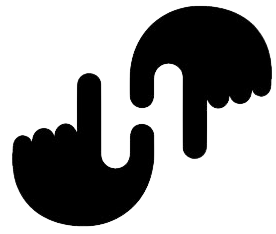Why are records so important?
Records are important for their content and as evidence of communication, decisions, actions, and history. As public institutions, school boards/authorities are accountable to the public and to government. Records support quality program and services, inform decision making, and help meet organizational goals.
What is the importance of proper record keeping?
You need good records to prepare accurate financial statements. These include income (profit and loss) statements and balance sheets. These statements can help you in dealing with your bank or creditors and help you manage your business.
Why records management is an effective tool in management control?
Records Management: Maintaining Your Organization’s Information. Keeping good records helps companies protect institutional memory as well as maintain evidence of activities, transactions, and decisions. An effective records management system can save money on storage and improve an organization’s efficiency.
What are the objectives of record management?
The Most Important Objectives of a Records Management ProgramInformation security. Information security is a key objective of a records management program. Preservation of vital records. Regulatory compliance. Controlling overhead costs. Streamlined file retrieval processes.
Why do we need a management system?
The benefits of an effective management system to an organization include: More efficient use of resources and improved financial performance. Improved risk management and protection of people and the environment.
What are the 3 types of management?
There are three broad categories of management styles: Autocratic, democratic and laissez-faire. Within these categories, there are specific subtypes of management styles, each with its own pros and cons.
What makes a management system successful?
An effective business management system is a deliberately integrated set of management processes and tools that help align the company strategy and annual objectives with daily actions, monitor progress and prompt corrective actions. It guides and empowers managers and employees to drive process improvements every day.
How do you manage quality?
Here are 6 steps to develop a quality control process:Set your quality standards. Decide which quality standards to focus on. Create operational processes to deliver quality. Review your results. Get feedback. Make improvements.
What is QMS and its purpose?
A quality management system (QMS) is a collection of business processes focused on consistently meeting customer requirements and enhancing their satisfaction. It is expressed as the organizational goals and aspirations, policies, processes, documented information and resources needed to implement and maintain it.
What is QMS tool?
A quality management system (QMS) is a formalized set of business processes a company uses to ensure the continual quality of the products or services it provides. The core function of a QMS is to document the processes, procedures and responsibilities for achieving quality objectives.
What are the QMS documents?
QMS documents detail the organisation’s structure, procedures, processes and resources and when followed result in a quality product or service being consistently delivered to the customer.
What is the difference between TQM and QMS?
Total quality management focuses on waste reduction and improved efficiency to ensure that a quality product is produced right from the first time. It relies on continuous improvement to ensure a consistent product and process quality while resolving issues, which can be managed using a robust QMS.
What are the six mandatory quality procedures?
Six procedure are- Control of Documents, Control of Records, Internal Audit, Corrective Action, Preventive Action, Control of Non Conforming Products.” Control of Documents. Control of Records. Internal Audit. Corrective Action. Preventive Action. Control of Non Conforming Products. Comments (0)
How do you maintain quality documents?
ISO 9001 Requires that you maintain control of documentsApprove documents for adequacy prior to issue.Review, update as necessary, and re-approve documents.Identify the changes and current document revision status.Make relevant documents available at points of use.Ensure the documents remain legible and readily identifiable.
How do you control documented information?
The entire process of organizing updated documentation according to ISO 9001 is commonly referred to as having a “control of documented information.” Like its name suggests, ISO 9001 requires that you have a “controlled,” or organized set of documents that reflect the details of your quality management system.
Why do we need document control?
Document Control is essential to information security By helping defining the rules for accessing documents (who can access a document, who can read it, modify it, etc) and by implementing these rules either on the network drives, or within a document control / document management software.
What is quality control documentation?
Quality assurance document control is the process used in the management, coordination, control, delivery, or support of an item required for quality assurance purposes. QA document control is an essential part of the quality assurance system for all aspects of GMP, GCP and GLP.
